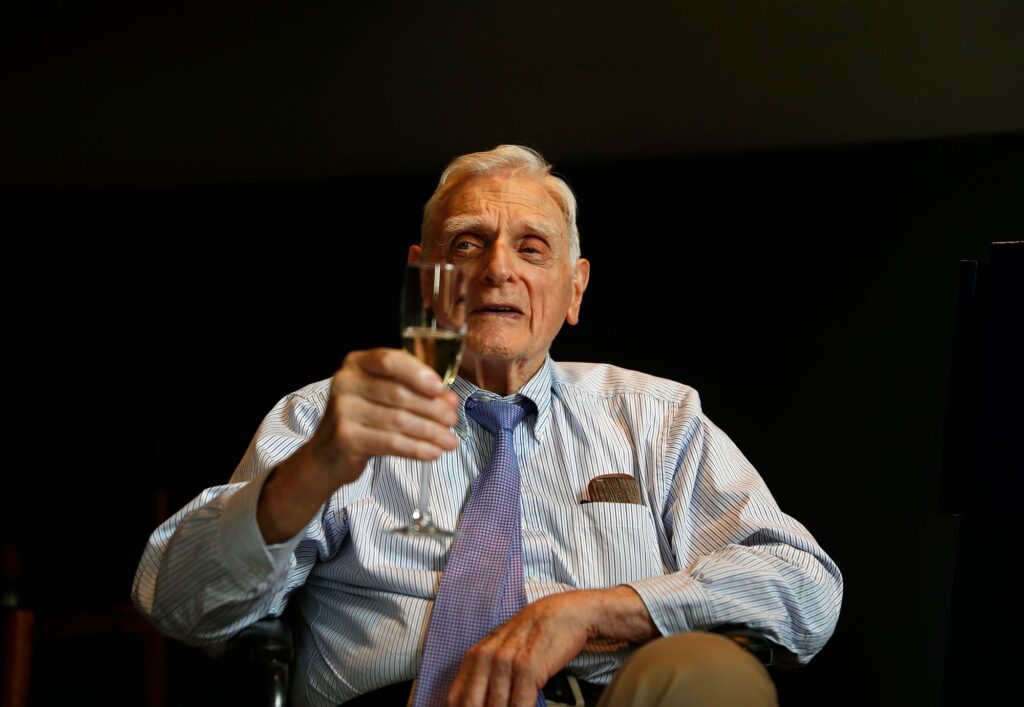John Goodenough, a prominent materials scientist, passed away on June 25, just a few weeks before his 101st birthday. Goodenough is widely recognized as the inventor of the lithium-ion battery, a groundbreaking development that earned him the prestigious Nobel Prize in Chemistry in 2019. During his impressive career spanning nearly four decades at the University of Texas, Austin, Goodenough’s pioneering work on the now ubiquitous lithium-ion battery played a crucial role in revolutionizing the wireless industry and making electronic devices accessible to people worldwide. Notably, he became the oldest recipient of the Nobel Prize at the age of 97, sharing the honor with Stanley Whittingham, a British-American chemist, and Akira Yoshino, a Japanese chemist.

John Goodenough Lithium-Ion Battery Pioneer Dies At Age 100
Goodenough, a renowned materials scientist, played a crucial role in the development of cathode materials that revolutionized lithium-ion batteries. This breakthrough enabled these batteries to power various electronic devices such as mobile phones, laptops, power tools, tablets, and even electric vehicles. Additionally, he made significant contributions to the field of magnetism by formulating fundamental rules and identified a ceramic anode material for a solid oxide fuel cell that can operate using methane as a fuel source. Despite his remarkable achievements, it is noteworthy that Goodenough never received any formal training in chemistry, which is uncommon for a scientist of his caliber.
John Goodenough Early Life
Born in Germany to American parents in July 1922, Goodenough spent his formative years in the United States. He faced challenges as a young man, struggling with dyslexia and reading difficulties. Although he pursued a degree in mathematics at Yale University, his academic journey took a unique turn. Just before completing his undergraduate studies, Goodenough was called to serve in the US Army during World War II, where he worked as a meteorologist. Despite being one course short of graduation, Yale recognized the army meteorology course he completed, allowing him to graduate summa cum laude in mathematics in the spring of 1943.
John Goodenough Career
Following his service in the US Army, Goodenough pursued higher education at the University of Chicago in 1946. He embarked on a journey that led him to earn a master’s degree and subsequently a Ph.D. in physics, with the esteemed Nobel laureate Enrico Fermi serving as his supervisor during his time there.
Goodenough’s professional career took off at the Massachusetts Institute of Technology’s (MIT) Lincoln Laboratory in the early 1950s, where he dedicated 24 years of his life. His tenure at MIT proved to be highly fruitful as he made significant contributions to the advancement of random-access memory. Moreover, Goodenough played a pivotal role in establishing the foundation of the contemporary theory of magnetism, which later became renowned as the Goodenough-Kanamori rules.
John Goodenough Educational Background
In a somewhat surprising move, Goodenough transitioned from MIT to the University of Oxford in 1976, where he assumed the leadership of the inorganic chemistry laboratory for a duration of ten years. During his time at Oxford, Goodenough directed his research efforts towards the field of electrochemistry, with a particular emphasis on batteries. It was during this period that he conducted the groundbreaking work that eventually led to his receipt of the Nobel Prize.
Russell Egdell, who was pursuing his PhD at Oxford University in 1976 when Goodenough joined, revealed to Chemistry World that the selection of an American researcher caused quite a stir within the inorganic chemistry community.
Later, in 1986, when Goodenough’s retirement from Oxford was on the horizon, he received an offer to serve as the chair of engineering at the University of Texas at Austin. Unlike in the UK, where retirement was mandatory before the age of 67, Goodenough continued working as a professor of materials science and engineering in the United States for an additional 32 years.
John Goodenough Awards & Achiements
John B. Goodenough, the Nobel laureate known for his groundbreaking work in battery materials and solid-state science, emphasized the importance of not retiring too early. At the age of 97, he was still actively teaching and conducting research when he received the Nobel Prize. In an interview, he mentioned that his interests beyond science included Christianity and traveling.
Goodenough shared memorable experiences of hiking in various mountain ranges such as the Jotunheimen Mountains in Norway, the Smokey Mountains in Tennessee, the Rocky Mountains in the US, the French and Austrian Alps, and the Sudeten Mountains in the Czech Republic. Reflecting on his journey, he expressed gratitude to his colleagues who had collaborated with him over the years, acknowledging their contributions in making his scientific endeavors extraordinary.
In addition to his scientific achievements, Goodenough also participated in politics. He joined over 80 US science Nobel laureates in endorsing Joe Biden for president in the 2020 election.
Arumugam Manthiram, one of Goodenough’s former postdoctoral fellows, described him as humble, thoughtful, and curious, with high moral standards. Manthiram, a battery scientist himself, considers Goodenough a role model both in science and in everyday life.
Gill Reid, president of the Royal Society of Chemistry, emphasized the profound impact of Goodenough’s work on modern life, particularly his contribution to the development of lithium-ion batteries. Reid acknowledged Goodenough’s recognition of the power of collaboration and the international language of science in achieving significant advancements.
Dan Steingart, a professor at Columbia University, commended Goodenough’s contributions, stating that even a scientist who achieves 1% of his understanding would consider themselves extremely fortunate. Steingart noted that Goodenough’s work marked the beginning of both the electronic and electrochemical eras, pushing the boundaries for a century.
In summary, John B. Goodenough’s influential career, spanning over seven decades, has revolutionized the field of science and technology, particularly in the realm of battery technology, and his legacy will continue to impact future generations.
